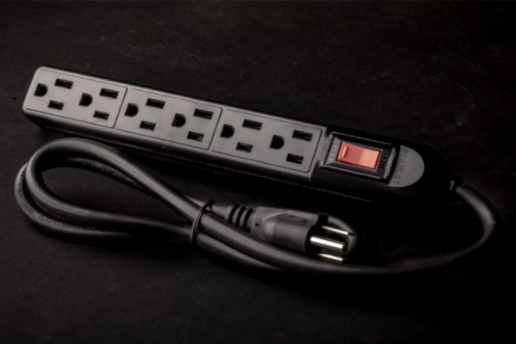How To Properly Maintain and Store Your Power Cords

Let’s consider that you are hosting an event. You’ve followed all the instructions perfectly, from the music to the lighting and a perfect playlist to dance to.
People are happy and enjoying themselves, with energy and positive vibes.
Who might have thought that the secret ingredient behind this wholesome experience is an extension cord? Yes! You read that right.
But how could a simple cord be a crucial part of an event? Let us tell you. Extension cords and power cords help supply power to devices and appliances far from outlets—for instance, your music system and outdoor lighting.
However, like any other tool, extension cords require proper care and storage to ensure adequate performance and safety. The article offers insight on how to maintain and store extension cords properly.
Regular Inspection for Wear and Tear
The first thing you should do about maintaining your power cords is periodically look for signs of wear and tear. Look for indicators of harm, including broken cables, splits in the insulation, and visible conductors.
Frayed, cracked, or otherwise damaged cords should be repaired or replaced as soon as possible to avoid fire and electric shocks.
This is because these minor issues can develop into big ones if not inspected regularly. Even a slight crack in a cord today can result in a dangerous short circuit if ignored, so you should be vigilant with your cords.
Proper Cleaning Techniques
Power cords should be maintained to ensure they last longer. Cords may be concealed behind furniture, accumulating dust, dirt, and grime that can impact their performance and safety.
Use a soft, dry cloth to clean your cords, and ensure you do this often. For slightly harder stains, it is advisable to use a slightly damp fabric. But ensure the cord is switched off while you clean with a wet cloth to avoid any electrical mishaps.
Remember not to use strong acids, alkalis, metals, or abrasive materials that can erode or wear out the insulation.
Cleaning is useful not only for maintaining the cord’s appearance but also for removing dirt that could compromise its usability.
Avoiding Overloading
The first and most typical mistake people can make when using extension cords is overloading.
The cord has a maximum load limit and should not be pulled beyond this limit, or it will snap.
Overloading a circuit leads to increased current flow, which results in heat build-up that may damage the insulation and even result in fires.
To prevent this, refer to the cord’s details and guarantee that none of the connected appliances exceeds the rated wattage. If necessary, try dividing the load into separate outlets or using a thicker cord.
Attention to the limitations of extension cords is essential to avoid accidents and misuse.
Safe Storage Practices
Safe placement of the power cords is critical to avoid damage at any one point. Do not wrap cords tightly because this may lead to internal damage to the wires.
Instead, a loose over-under should be applied to decrease the strain exerted on the wires.
It is recommended to keep cords in a cool and dry environment and avoid exposing them to direct sunlight or humidity, as that deteriorates the insulation of the cables.
These methods of wrangling cords can make the cords neat and free from tangles and hence can be used to increase the lifespan of the cords.
Handling and Unplugging
How long your power cables last and how you handle and unplug them are important factors. Hold the plug rather than the cord when disconnecting to prevent straining the connection points.
Removing the wires from the plug or yanking the cable might result in internal damage. Be careful not to draw the rope over sharp edges or put it under stress when moving equipment.
Treating the cord and its connectors with care minimizes abrasion and maintains integrity. Your wires will still function if you take good care of them.
Avoiding Extreme Conditions
Your power cables may fail if exposed to severe temperatures, moisture, or chemicals, which can deteriorate their materials.
Steer clear of water and chemicals when using or storing cables, as well as from extremely hot or cold temperatures.
Ensure power cables are rated for outdoor usage if you must use them outside. These cords are made to endure more challenging circumstances.
To guarantee your cables’ longevity and safety and give you dependable power connections, protect them from harsh environments.
Labeling and Organization
In particular, if you have many power cables, keeping them labeled and arranged might help you avoid confusion and save time.
For easy identification of the appropriate cord for the task, label each one with its length, capacity, and intended application.
Use cord organizers, hooks, or reels to keep cables neat and minimize tangling. Keep your cables in better shape by minimizing stress and needless bending by keeping them organized. This also makes it simpler to discover and utilize your cords.
Regular Testing
Your power cables will operate safely and correctly if you test them regularly. Check the wiring for breaks or problems with a multimeter or continuity tester.
The cord has to be fixed or replaced if you observe any problems, such as uneven power distribution or apparent damage.
To eliminate potential risks and ensure your wires are always ready for use, regular testing helps you spot problems early. Proactive power cable maintenance involves maintaining a regular testing plan.
Conclusion
Longevity, effectiveness, and safety depend on adequately storing your power cables. By following the easy yet efficient methods listed above, you may feel more at ease knowing that your electrical connections are dependable and safe. Properly cared-for power cables are essential to a smooth, healthy experience, whether you’re cooking or just powering your everyday electronics.




